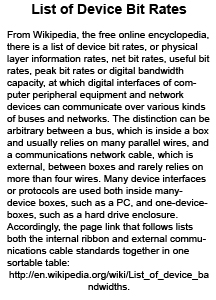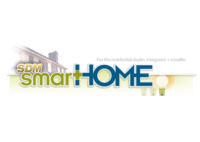
There is a frenzy over communications related to home area networks (HANs) and machine to machine (M2M) communications. The ZigBee wireless approach is a standard born out of IEEE 802.15.4 and an electrical utility darling.
So it is a battle over what is or will be the home operating system and the ways in which devices talk with each other or what industrial engineers call machine to machine (M2M) communications. Battle may be too gentle a descriptor. “It’s a frenzy out there,” says Wade Patterson, chief executive officer (CEO) at Synapse Wireless, the Huntsville, Ala., wireless M2M firm. “It’s a mishmash with no one communications method really dominating at this time.” Patterson does believe that an Internet connection is essential and “the same processor that controls the network should control the appliances or devices.”
Beyond the Internet and typical home computer and home automation networks, the smart grid and home energy management have impacted HAN in a significant way.
There are big players at work or sniffing out the HAN: Intel is suddenly back in home energy management; also count in GE, Microsoft, Cisco Systems and Google. Yet, electronic systems contractors (ESC) with an emphasis on alarm monitoring may have an advantage.
Enphase Energy’s chief marketing officer, Bill Rossi, points out that “it's pretty confusing for the homeowner who is trying to figure out what GE or Google or Microsoft are going to do for home energy management. If I am engaged with my security company, I am much more likely to work with them.” Petaluma, Calif.-based Enphase makes solar energy microconverters, devices that boost the efficiency of residential and commercial solar power projects. He and others believe that home security systems, ESCs and dealers have a natural lead over others since their systems indicate people at home or not and, for decades, have been third-party monitored.
Eric Smith, the chief evangelist (yes, that’s his title) of Control4, Salt Lake City, Utah, recently told an industry group, “Our goal was to be the OS of the home and we got pulled into home energy management.” Smith has been looking for the killer application in home automation since 1989. His current answer is that there is no one killer app.
There is no doubt, however, as to the importance of the Internet and Internet service providers when it comes to M2M communications in the home. A case in point: Technology leader Google has joined the IPSO Alliance, a group of technology companies with the common goal of promoting IP for smart object communications, allowing items ranging from appliances to factories to cars to “communicate” as individuals do over the Internet. In addition to Google, IT and technology manufacturing company Fujitsu has joined IPSO, alongside specialty electronics companies Elster Electric, Echelon Corp. and Augusta Systems. The IPSO alliance now boasts 53 member companies, including Bosch, Cisco, Ericsson, Intel, SAP, Sun Microsystems and Texas Instruments.
Still, at this time, there are myriad ways to setup an HAN, most often using one or more wired or wireless methods.
Most homeowners today have landline telephone, cellular phone and cable, DSL or satellite TV service, often bundled with high-speed Internet. Some homes, often new construction, are Ethernet or fiber prewired for home automation, whole home audio/video and some other home systems. Desktop, laptop, and netbook computers, as well as peripherals such as printers and network-attached storage devices, talk to each other and the Internet through wired and wireless means. A common no-wires approach is WiFi, certified through the WiFi Alliance and based on IEEE 802.11 specifications. But can WiFi HANs carry the whole house load?
Well, as newer WiFi products are introduced to handle whole house audio and video, the approach is growingly attractive.
Of course, a Wi-Fi network can connect electronic devices to each other, to the Internet, and to wired networks that use Ethernet technology. But there are many others encouraged through alliances, industry partnerships, forums, standards and specifications aimed at the home and its systems, appliances and devices.
As alternatives, existing home wiring (coax in North America, phone wires in multi-dwelling units, powerline in Europe and the United States) can access the Internet and allow devices to transfer information. Speaking of broadband over powerline, IEEE has a working group developing the global standard for high-speed powerline communications. Recently, IEEE passed P1901 which grounded a standard for wireline products produced and sold by companies that are part of the HomePlug Powerline Alliance.

Then there is the old-time landline telephone. HomePNA (formerly the Home Phoneline Networking Alliance) promoter companies are AT&T, 2Wire, CopperGate, Motorola, Cisco (Scientific-Atlanta), Sunrise Telecom and K-Micro. Early last year, HomePNA announced that it has signed a liaison agreement with the HomeGrid Forum to promote the ITU-T G.hn global wired home networking standard.
G.hn takes the home to the biggest of villages – the United Nations. G.hn provides a way to create a high speed local area network using existing home wiring. In June, the United Nations International Telecommunication Union (ITU-T) approved G.hn components. Numerous manufacturers are expected to bring semiconductors for multimedia home networking to market later this year. Through this one global standard, ESCs and then their clients will be able to connect and share content of all types over existing home wires — coaxial cable, powerline and phone lines.
Says Matt Theall, president of the HomeGrid Forum and technology strategist at Intel, “G.hn is the only technology platform that supports every wire in the home.” The standard is particularly aimed at Internet protocol (IP) television or what some tag as IPTV. The HomeGrid Forum is a trade group promoting the G.hn standardization efforts for next-generation home networking.
Another approach, WiMAX or Worldwide Interoperability for Microwave Access is a telecommunications protocol that provides fixed and fully mobile Internet access. The current WiMAX revision, based on IEEE 802.16m update, is promoted by the WiMAX Forum as "a standards-based technology enabling the delivery of last mile wireless broadband access as an alternative to cable and DSL."
But whatever the alliances and forums and standards, with the emergence of smart grid, smart appliances and home energy management, two wireless methods of M2M communications are headline grabbing: ZigBee and Z-Wave. One is based on a standard (ZigBee and IEEE 802.15.4) and the other — Z-Wave — a proprietary technology licensed from Sigma Designs.
ZigBee protocols use small, low-power, digital, radio-based networks such as wireless light switches with lamps, electrical meters with in-home-displays and consumer electronics equipment. The technology defined by the ZigBee specification is intended to be simpler and less expensive than other networks such as Bluetooth. ZigBee is targeted at radio frequency applications that require low data rate, long battery life and secure networking. The ZigBee Alliance is a group of companies that maintain and publish the ZigBee standard.

The Z-Wave Alliance is an international consortium of manufacturers that provides interoperable Z-Wave-enabled devices. Because Z-Wave can transceive commands based on real-time conditions and is able to control devices in intelligent groupings, it allows novel extensions of traditional home security concepts. As an example, according to a description on Wikipedia, the opening of a Z-Wave-enabled door lock can de-activate a security system and turn on lights when children arrive home from school and send a notification to a parent's PC or cell phone via the Internet. Opening a Z-Wave-enabled garage door can trigger exterior and interior home lights, while a Z-Wave motion detector can trigger an outdoor security light and a Webcam, which would allow the end user to monitor the home while away.
The Z-Wave Alliance, the open consortium of global companies delivering what they say is the world's largest HAN-enabling technology, used the recent CEDIA 2010 conference to certify its 400th product -- the Mi Casa Verde Vera Gateway powered by MiOS.
ZigBee is an electricity utility darling when it comes to smart grid. With approximately 400 members across a wide spectrum of industries, the ZigBee Alliance promotes an open standard approach for manufacturers wanting to offer smarter and greener products. Products include:
• Smart Energy – Provides technology for monitoring, controlling and automating the delivery and smart use of energy and water. Certified products include a range that covers energy service portals, meters, displays, programmable communicating thermostats and smart plugs.
• Home Automation – Professional installers can easily create smart homes for more control of home appliances, lighting, security, heating and cooling systems.
• Telecom Services – Enables delivery of value-added services suited for communication platforms, access points, terminals and location nodes.
The ZigBee Alliance and the Wi-Fi Alliance, earlier this year, struck an agreement to collaborate on wireless HANs for smart grid and other applications.
So especially when it comes to emerging home energy management applications and the diversity of wireless communications, it’s more a matter of future devices and smart appliances and what’s embedded in them than it is a matter of the type of wiring. Welcome to the home gateway.
One indicator comes from Belkin International, Playa Vista, Calif., with its Conserve Gateway. The company bills itself as connecting people to technology through intuitive networking solutions and mobile accessories. Its gateway provisions and manages an HAN to enable the monitoring and control of in-home devices, appliances and energy loads. Among the interfaces: ZigBee for communicating with smart meters deployed with utility advanced metering infrastructure or AMI; A Wi-Fi/Ethernet network interface for communicating with cloud-based device management systems through a homeowner's broadband router and provides an alternate channel for utilities to communicate with the gateway; and there is secure data communications across wired and wireless media and networking protocols, too.
Chip makers are also joining the HAN frenzy. For instance, GainSpan of San Jose, Calif., with its expertise in embedded WiFi, now has an all-in-one module that will allow home appliance manufacturers to more easily drop WiFi into their products using the firm’s hardware and software. That will create more ESC and HAN business as more devices and appliances turn smarter and connect into the Internet and with each other.
